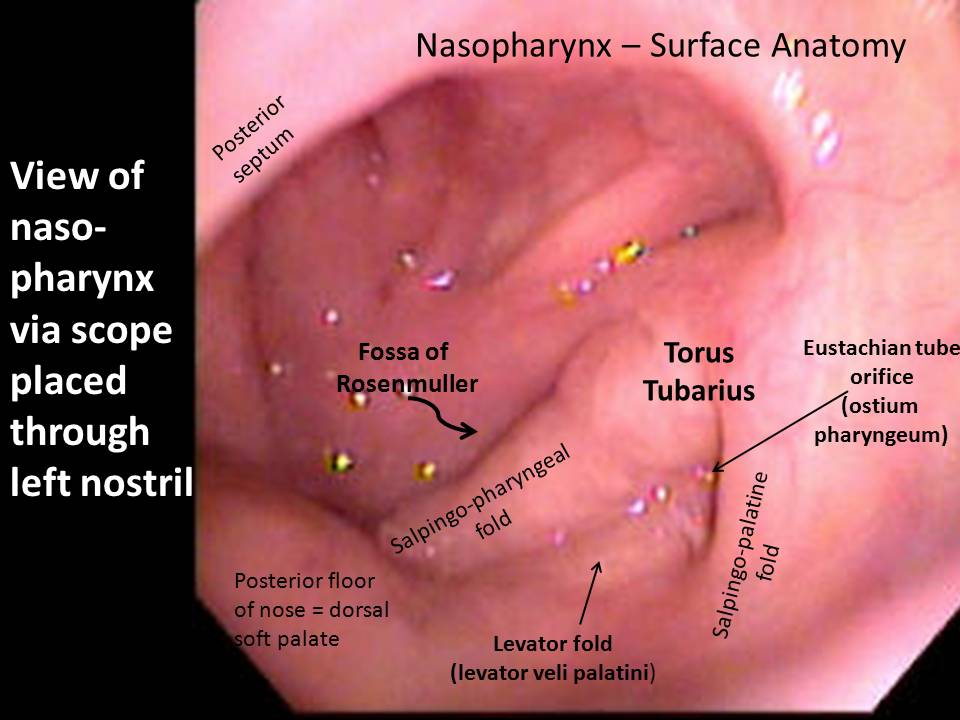return to: Music and Medicine on Monday (M+M+M) at the University of Iowa - Schedule of Events and Disclaimer
see also: Cleft Lip and the Trombone -- Music and Medicine on Monday Embouchure and Wind Instruments
Description of Stress Velopharyngeal Incompetence (2 min 50 seconds)
nasal escape playing trombone
Adaptations to the Trombone to Decrease Pressure Needed to Play - also Discusses Use of Plunger
(2 minutes 48 seconds)
Demonstration of palate function while playing the flute (2 minutes 50 seconds):
Full 30 minute session:
Definitions
Palate: the structure separating the nose from the mouth comprised of an anterior boney segment (hard palate) and posterior muscular (soft palate) designed to intermittently close the connection to the nose during maneuvers including speaking, swallowing and wind instrument playing (Hollinshead 1968).
Soft Palate Incontinence (Velopharyngeal Incompetence): Inadequate closure of the sphincter that separates the mouth from the nose and is formed by the soft palate, the lateral pharyngeal walls, and the posterior pharyngeal wall (Smetona 2024).
Stress Velopharyngeal Incompetence (SVPI): Unwanted nasal air leakage when playing wind instruments requiring high intraoral pressures (Malick 2007)

Orofacial clefts: Primarily refer to cleft lip with or without cleft palate (CL/P) and cleft palate only (CPO) representing the second most common congenital birth defect in the United States after Down Syndrome Congenital malformations (Nasreddine 2021)
Cleft Lip and Palate: May occur in association with additional congenital anomalies or genetic syndromes in 38.4% of cases (Worley 2018). Incidence of cleft lip with or without cleft palate is ~1:1,000 and incidence of isolated cleft palate is ~1:2000 (Parker 2010)
Cleft Palate can be classified according to extent of anatomic involvement ranging from a submucous cleft with midline notching of the hard palate to the presence of a bifid uvula to a complete cleft involving the soft and hard palate.
Background
The prevalence of stress velopharyngeal incompetence (SVPI) among musicians was evaluated through questionnaires distributed to approximately 300 brass or woodwind student musicians at 3 public universities and 1,000 plastic surgeons and otolaryngologists.(Malick 2007). Thirty-four percent of responding musicians reported symptoms of SVPI. Only 27% of the responding physicians reported having seen a patient with SVPI.
Reported Interventions (Malick 2007)
| Referral to Speech Pathology | 47.5% |
| Sphincter Pharyngoplasty | 30.0% |
| Pharyngeal Flap | 26.9% |
| Referral to Cleft Palate Team | 24.4% |
| Watch and Wait | 18.8% |
| Posterior Wall Fat Injection | 12.5% |
| Palatal Lift | 10.0% |
In addition to difficulties in generating high intraoral pressues in the presence of disturbance to the soft palate, eustachian tube difficulties often occur in patients with cleft palate leading to hearing loss associated with otitis media with effusion (Heidsieck 2016).

References
van der Weijden FN, Hernández EM, Rossell Perry PE, van Essen LH.The Influence of Music Lessons on the Socio-Emotional Wellbeing of Children With Cleft Lip and/or Palate.British Dental Journal. 2023;. doi:10.1038/s41415-023-5570-x.
van der Weijden FN, Hazenberg CJM, van der Kaaij NCW, Kuitert RB.A Case Series of Wind Instrument Players With Cleft Lip and/or Palate British Dental Journal. 2023;234(4):223-231. doi:10.1038/s41415-023-5510-9.
Syamal MN, Bryson PC: Injection Pharyngoplasty With Autologous Fat as Treatment for Stress Velopharyngeal Insufficiency in Brass and Woodwind Musicians. JAMA Otolaryngology-- Head & Neck Surgery. 2017;143(2):142-146. doi:10.1001/jamaoto.2016.1920.
The Cleft Palate-Craniofacial Journal : Official Publication of the American Cleft Palate-Craniofacial Association. 2007;44(4):424-33. doi:10.1597/06-176.1.